1st PRIZE
Alexandras Park
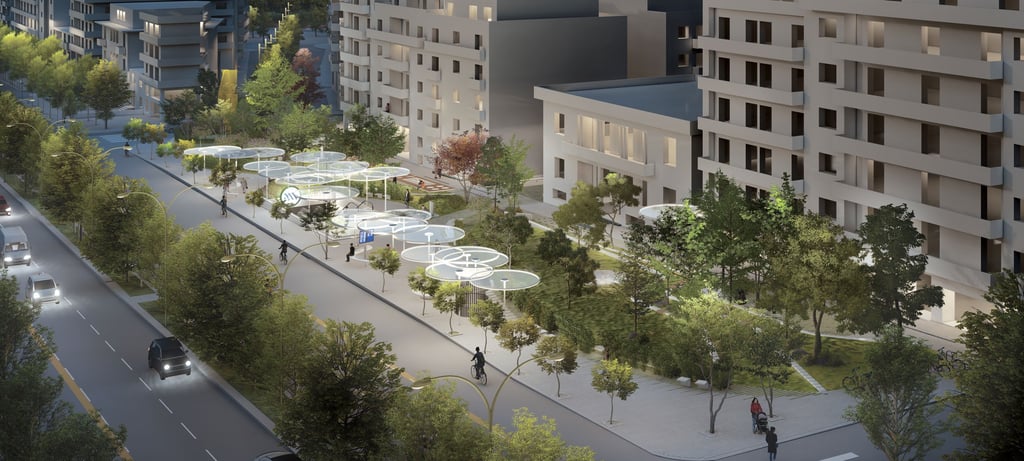

DATE: 2023
CLIENT: Attiko Metro S.A., Municipality of Athens
SECTOR: Civic/Park
LOCATION: Athens, Greece
SIZE: 80,000 sqft
STATUS: Concept Design
National Concept Architectural Competition


“Urban islands”, such as the study area, constitute intermediate spaces in the city, which are called upon to evolve from “peripheral supplements” into small centers and to bear the burden of a broader design that must respond to modern environmental and social sustainability demands. A methodology for approaching and designing is proposed, following environmental, energy, and bioclimatic principles, allowing the lifting of boundaries, offering coherence between networks and flows, and enhancing the community of smaller centers and areas, while simultaneously incorporating urban greenery.
THE SPECIAL CONSTITUTION OF THE URBAN ISLAND
Two conditions delineate and influence the shaping of the area. On one hand, the wide straight boulevard, and on the other, the adjacent neighborhood. Therefore, the role of the urban island is twofold: to combine the supralocal and local character and to blend the large scale of the city with the nearby neighborhoods. The proposal aims to highlight both the station on the supralocal axis of Alexandras Avenue and regulate the qualities of the public shared space, allowing the coexistence of urban green continuity with everyday activities.
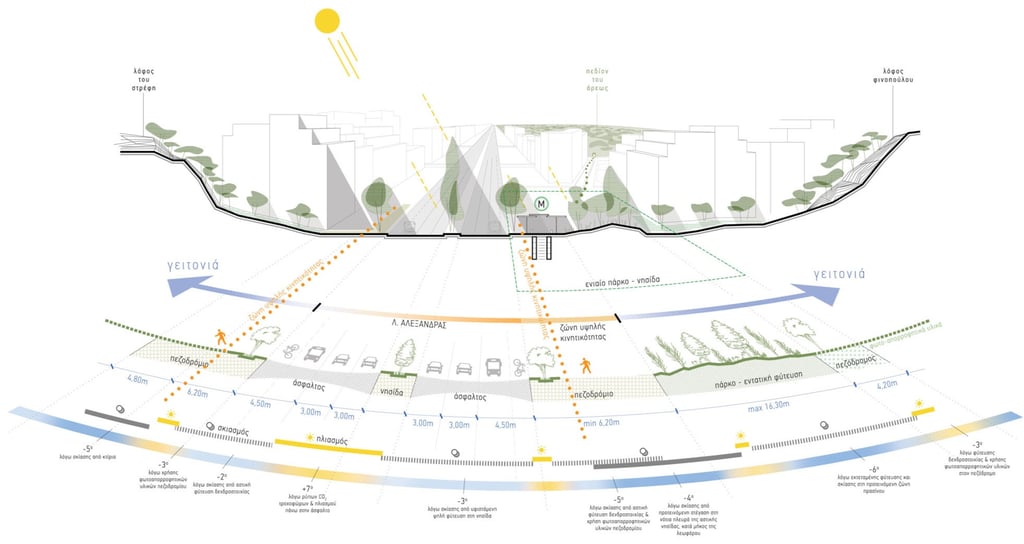

The Avenue of Alexandra is one of the three sides of the large urban triangle traditionally defining the centrality of the city of Athens. The expansion of the metro stations – a new underground network appearing in the urban fabric’s horizon – will mediate new focal points, rearranging the “official centralities”. The Avenue of Alexandra is synonymous with rapid transit and high loads; it mainly intersects, rather than unifies, the areas of the natural landscape with their neighborhoods, as there are no organically evolving public spaces within its expanse. Redevelopment is much needed across its entire front.
THE IDEA
The islet that will host the metro, despite its small size, presents an opportunity for the reconstitution of the axis’s significance. In this process, a design paradigm could be created – an urban space methodology that follows environmental, energy, and bioclimatic principles, allowing the lifting of boundaries with open free spaces, and enhancing the sociability of smaller centers and areas, as well as the presence of urban greenery, aiming for the sustainability and resilience of the city.
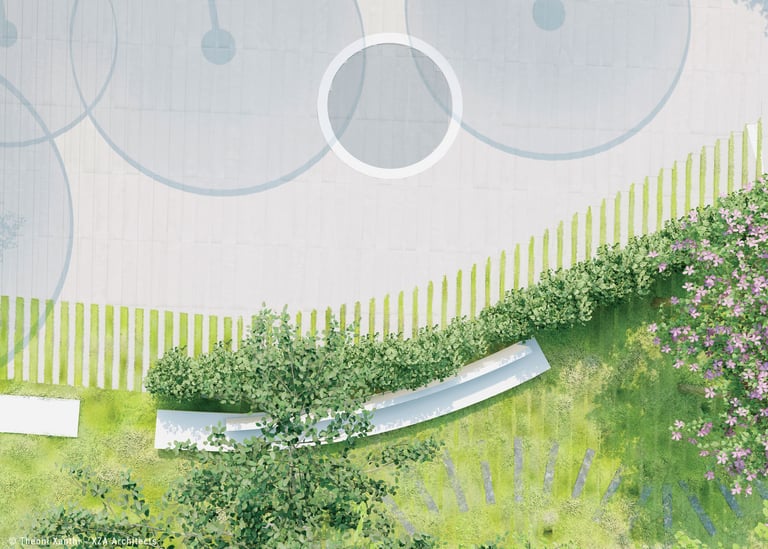

– The city needs revitalizing stimuli, and the canopies, in their repetition, trace a faint urban sculpture along the axis of Alexandras. Apart from signifying, sheltering, and equipping public space, they can also participate in the alternation of the experience of an executive daily life, be illuminated on everyday life, host an exhibition or an urban event, and connect with distinct memories and new urban experiences.
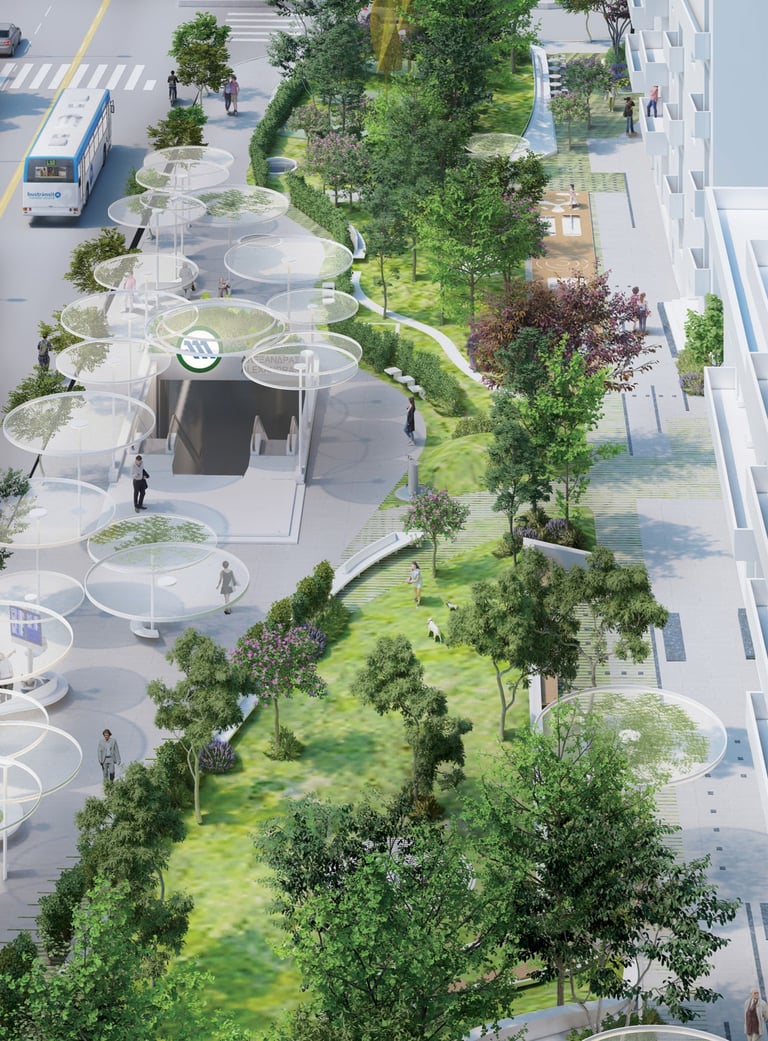

The following are used as spatial and urban tools of the small scale: 1. three graded zones, the “metropolitan” pedestrian sidewalk of high traffic, the park, and the promenade, 2. the canopy of three typologies that serves as a tool for drafting a rule of urban homogeneity and a guide for the transition from supralocal to local scale. 3. smaller inclusive spaces, open and accessible to all ages and social groups, are referred to, allowing multifunctionality (rest, sports, recreation, play). 4. urban equipment and public infrastructure are also utilized.
METHODOLOGICAL APPROACH
4 SPATIAL AND URBAN TOOLS


A prominent element and methodological tool of the proposal is the canopy. At an urban level, it operates as a recognizable event, weaving the web, coloring it, shading it, and multiplying its dynamics, signifying the entrances to the metro, public transportation stops, or sitting areas. It is placed either linearly or in groups, with multiple possibilities, forming smaller or larger reference points. The repetition of the unit allows for adaptation to the slopes of the space under formation. It represents a syntactic rule of urban homogeneity, as it serves as a guide, a channel of connection with nearby environments (parks, squares, traffic flows), and also an urban tool linking broader areas.
THE BIOCLIMATIC CANOPY
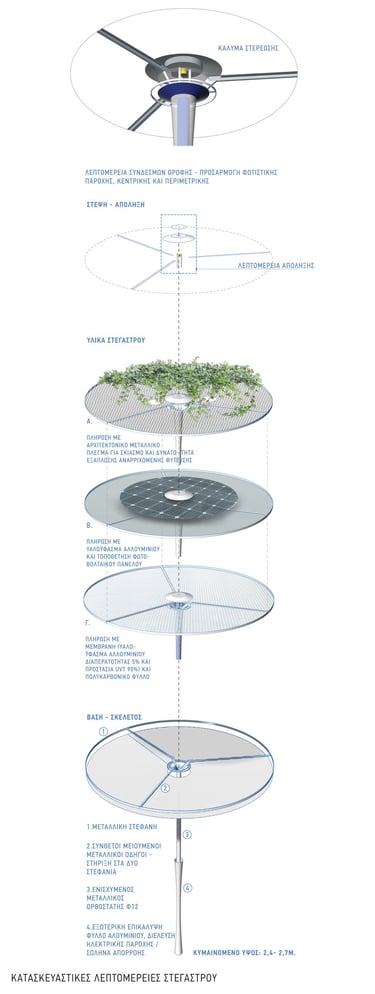

The proposal is based on the bioclimatic design, emphasizing the economy and utilization of natural resources – air, water, and sunlight – the reconstruction of the natural environment, and the use of orientation to achieve natural cooling and shading.
CONDITIONS OF BIOCLIMATIC AND ENERGY PLANNING
The canopy, through shading and overlay, either with solar photovoltaic panels (solar umbrella) or with the potential spread of climbing plants, it takes a leading role in the energy and bioclimatic design of the space, enhancing the quality of the microclimate.
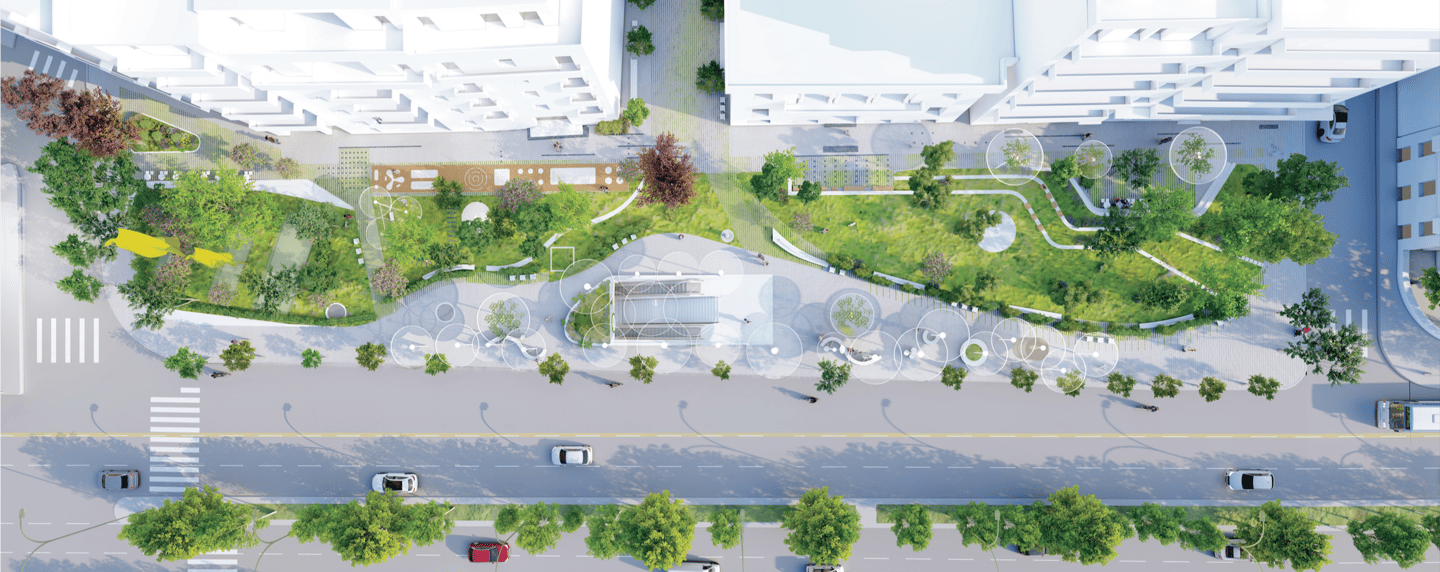

The choice of materials that allow breathability and water absorption, the intensive planting of tall trees that allow air to penetrate the lower layers of the urban park, contribute to natural cooling and avoiding the heat island phenomenon, while at the same time preserving the biodiversity of the fauna and flora. The landscape and planting architecture follow, intensify, and enrich the spatial logic of architectural design. It is based on the principles of biodiversity and the balance of Mediterranean vegetation. The guiding principles include resource efficiency, species resilience, and low maintenance.
MATERIALITY AND LANDSCAPE
In conclusion, the functional modernization of the city with the new metro stations can serve as the starting point for its redefinition. It should be noted that:
This city, along with the economy of transportation, requires care. It is understood that the relationship between residents and public space is a broader political, institutional, and educational issue, and the positive interaction and the concept established for structures in the city and urban landscapes are considered significant each time.
The city needs revitalizing stimuli, and the canopies, in their repetition, trace a faint urban sculpture along the axis of Alexandras. Apart from signifying, sheltering, and equipping public space, they can also participate in the alternation of the experience of an executive daily life, be illuminated on everyday life, host an exhibition or an urban event, and connect with distinct memories and new urban experiences.









